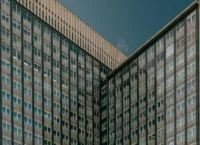- Home
- Articles
- Architectural Portfolio
- Architectral Presentation
- Inspirational Stories
- Architecture News
- Visualization
- BIM Industry
- Facade Design
- Parametric Design
- Career
- Landscape Architecture
- Construction
- Artificial Intelligence
- Sketching
- Design Softwares
- Diagrams
- Writing
- Architectural Tips
- Sustainability
- Courses
- Concept
- Technology
- History & Heritage
- Future of Architecture
- Guides & How-To
- Art & Culture
- Projects
- Interior Design
- Competitions
- Jobs
- Store
- Tools
- More
- Home
- Articles
- Architectural Portfolio
- Architectral Presentation
- Inspirational Stories
- Architecture News
- Visualization
- BIM Industry
- Facade Design
- Parametric Design
- Career
- Landscape Architecture
- Construction
- Artificial Intelligence
- Sketching
- Design Softwares
- Diagrams
- Writing
- Architectural Tips
- Sustainability
- Courses
- Concept
- Technology
- History & Heritage
- Future of Architecture
- Guides & How-To
- Art & Culture
- Projects
- Interior Design
- Competitions
- Jobs
- Store
- Tools
- More
What are Construction Soft Costs? 5 Best Practices for Managing Them

When budgeting for a construction project, the key focus may seem like the building materials and labor costs. However, soft costs actually account for around 30% of the total cost of a construction project.
Added fees that crop up throughout the lifecycle of a project can quickly add up and leave a project over-budget without it even being realized.
In this article, we will explain what soft costs are and outline five strategies that can be implemented to best manage them and avoid overspending.
Table of Contents
ToggleSoft Costs vs. Hard Costs in Construction
Hard costs refer to all of the key expenses you would expect when planning a construction project. Everything associated with the physical building is put into this category, from the building materials to the labor costs.
On the other hand, soft costs are used to describe all of the indirect costs involved in a construction project. Some common soft costs include legal fees, permits, architectural fees and marketing costs. Although these costs make up a large portion of a project’s budget, they can be trickier to manage since they are easily overlooked.
Typically, hard costs are a much easier expense to manage as the materials and labor can be planned for in advance. Soft costs tend to differ more from project to project and can crop up at any time, so effectively managing construction costs is an essential skill for construction companies.

Best Practices for Managing Soft Costs
To better manage soft costs, here are five best practices that can be implemented within a construction project to help manage the budget and plan ahead.
1. Align soft and hard costs
Before construction work gets underway, sufficient planning should be carried out to ensure the project runs as efficiently as possible.
To be able to estimate soft costs accurately, they should be aligned with the hard costs. Collaborating with specialists from each stage of the project will provide the expert insights needed to know what soft costs are likely to be incurred.
For example, during the design stage, the architects will be able to inform the construction team of exactly what fees and permits will be required.
2. Allocate contingency costs
As well as a project has been planned, there is always the possibility of unforeseen circumstances cropping up.
Keeping a designated amount of money aside will mean a project does not go over budget when addressing unexpected costs throughout a project. Typically, an allocated contingency budget would be around 5 to 10% of the overall project budget.
This pot of money can be used in situations such as project delays from bad weather, design changes, consulting a personal injury lawyer after an accident, or covering extra labor costs.
3. Negotiate fixed-fee contracts
For construction companies that are working to tighter budgets, sourcing fixed-fee contracts can help ensure added costs are avoided.
Paying providers hourly rates offers the benefit of flexibility, but can also incur added costs along the way. Instead, negotiating a fixed price for a set of predetermined deliverables can make budgeting much more manageable.
These fixed contracts typically include all soft costs, such as fees and administrative costs, so the construction client doesn’t have to worry about hidden fees.
4. Utilize historical data
Data from previous projects can be a huge help for construction companies when budgeting for upcoming projects.
Finding trends in the amount spent on soft costs, any recurring issues, and the timeframes of a project can make it significantly easier to make accurate predictions going forward.
There are a range of tools available that can analyze vast amounts of data to identify patterns and make predictions. These can not only help a construction company improve their accuracy, but can also save hours of time.

5. Carry out regular budget reviews
Once a plan is in place and the project is underway, keeping an eye on the budget is still crucial.
Since unexpected soft costs and changes to the initial plan are almost guaranteed at some point throughout the process, the impact these will have on the budget needs to be accounted for.
At regular intervals, the proposed expenses should be compared against the actual expenses to see how well aligned they are and whether the project is still feasible within budget.
Carrying out budget reviews at the end of each key milestone will quickly show whether change needs to be implemented.
Reducing Costs by Expecting the Unexpected
Although soft costs may seem like small additions every now and then, they very quickly add up and can equate to a big chunk of the project budget.
Construction companies need to effectively manage soft costs to not only avoid overspending, but also ensure their projects are fully compliant and well-managed. By preparing for more than just the hard costs, a well-rounded project can be carried out without any nasty surprises.
By aligning hard and soft costs, allocating contingency funds, negotiating fixed-fee contracts, utilizing historical data, and keeping on top of budget reviews, budgets can be better managed than ever before and projects can be carried out as smoothly as possible.
illustrarch is your daily dose of architecture. Leading community designed for all lovers of illustration and #drawing.
Submit your architectural projects
Follow these steps for submission your project. Submission FormLatest Posts
Key Features to Look for When Investing in Construction AI Cameras
Continuous monitoring is crucial on construction sites for effective accident prevention. Artificial...
Why Legal Support Is Critical After a Serious Construction Accident
If you are dealing with a construction accident or have ever watched...
7 Common Myths Every Contractor Should Stop Believing
The construction landscape is a complicated place at the best of times,...
Automation in Construction: Why Human Safety Still Matters
Automation in construction can cut injuries, but new risks emerge. Learn practical...












Leave a comment